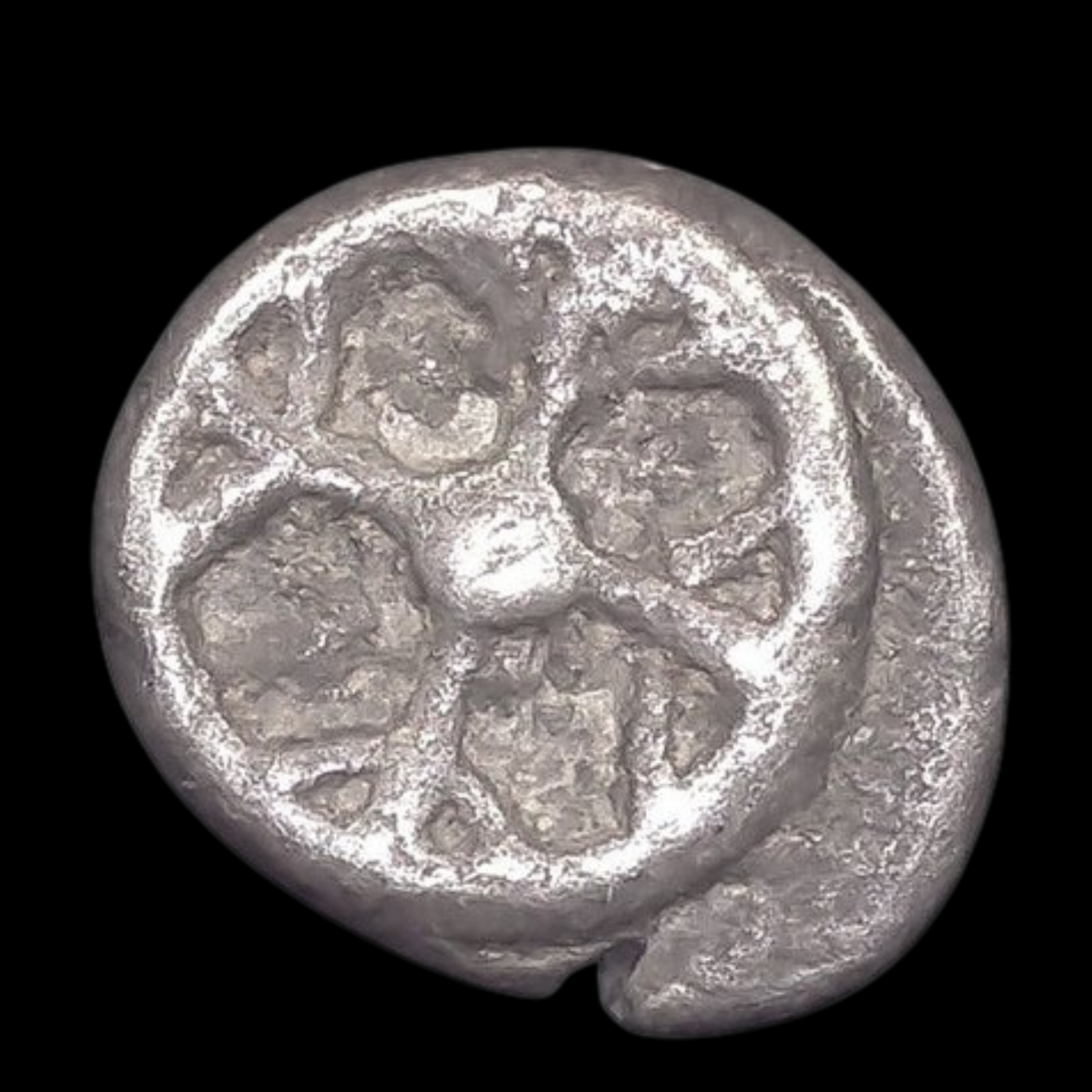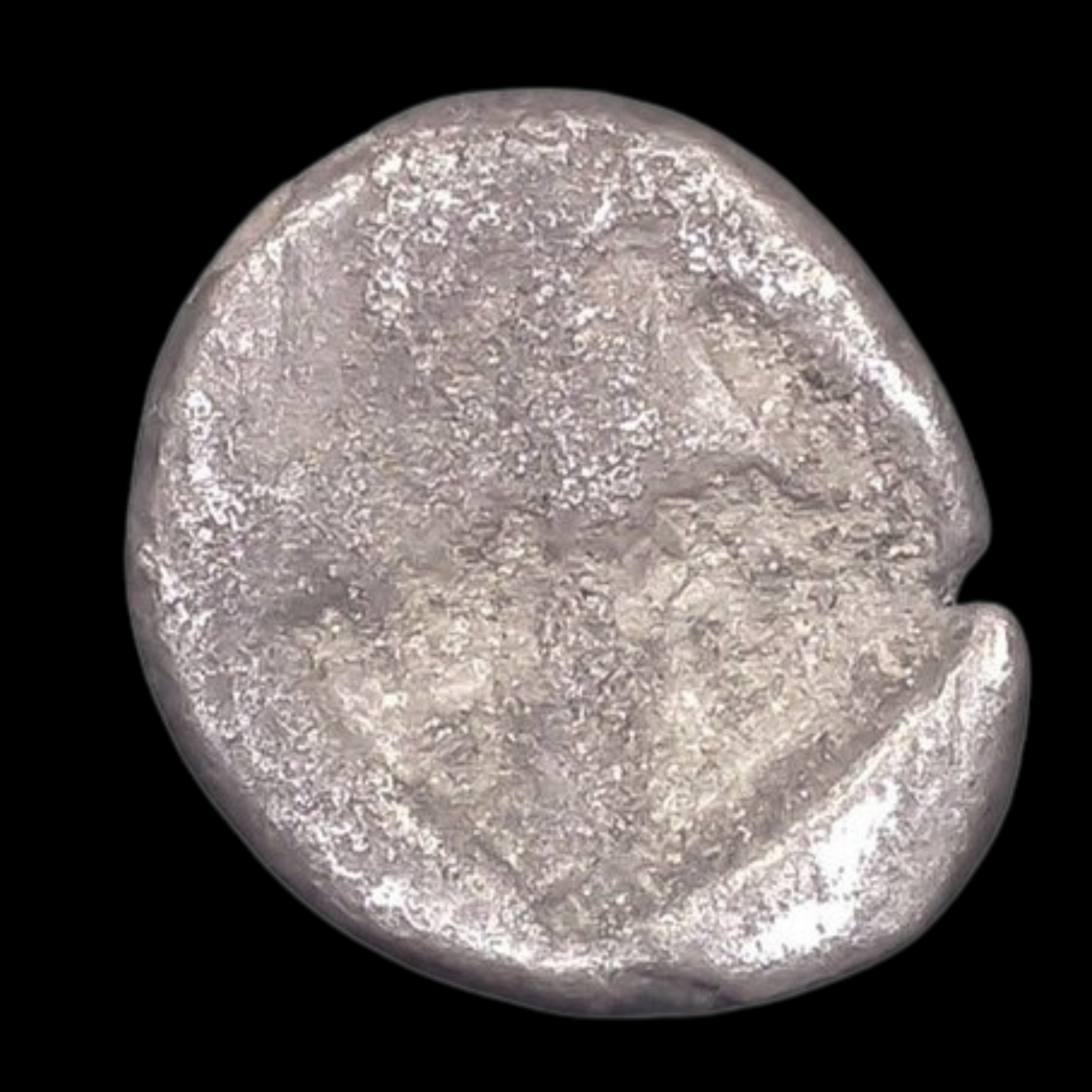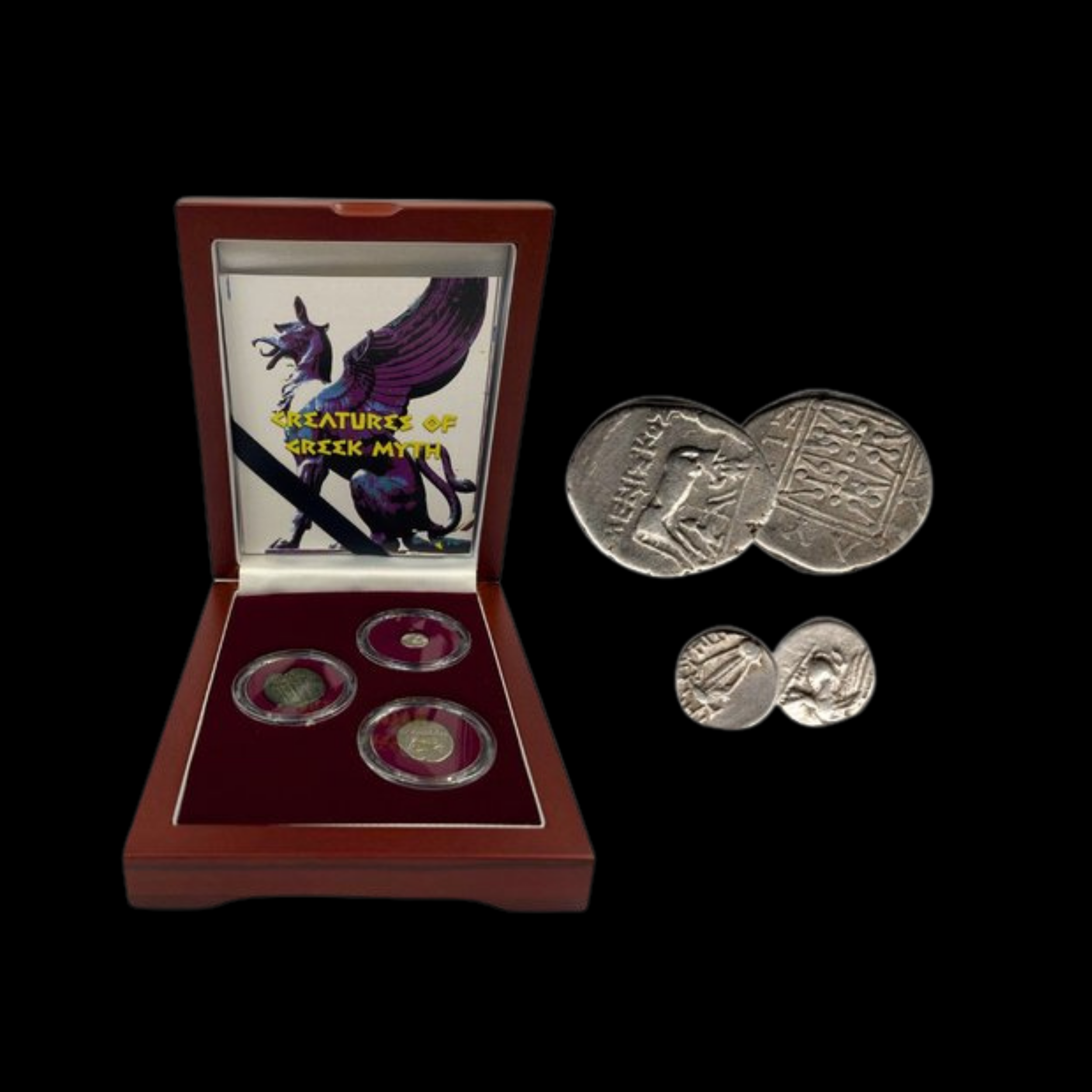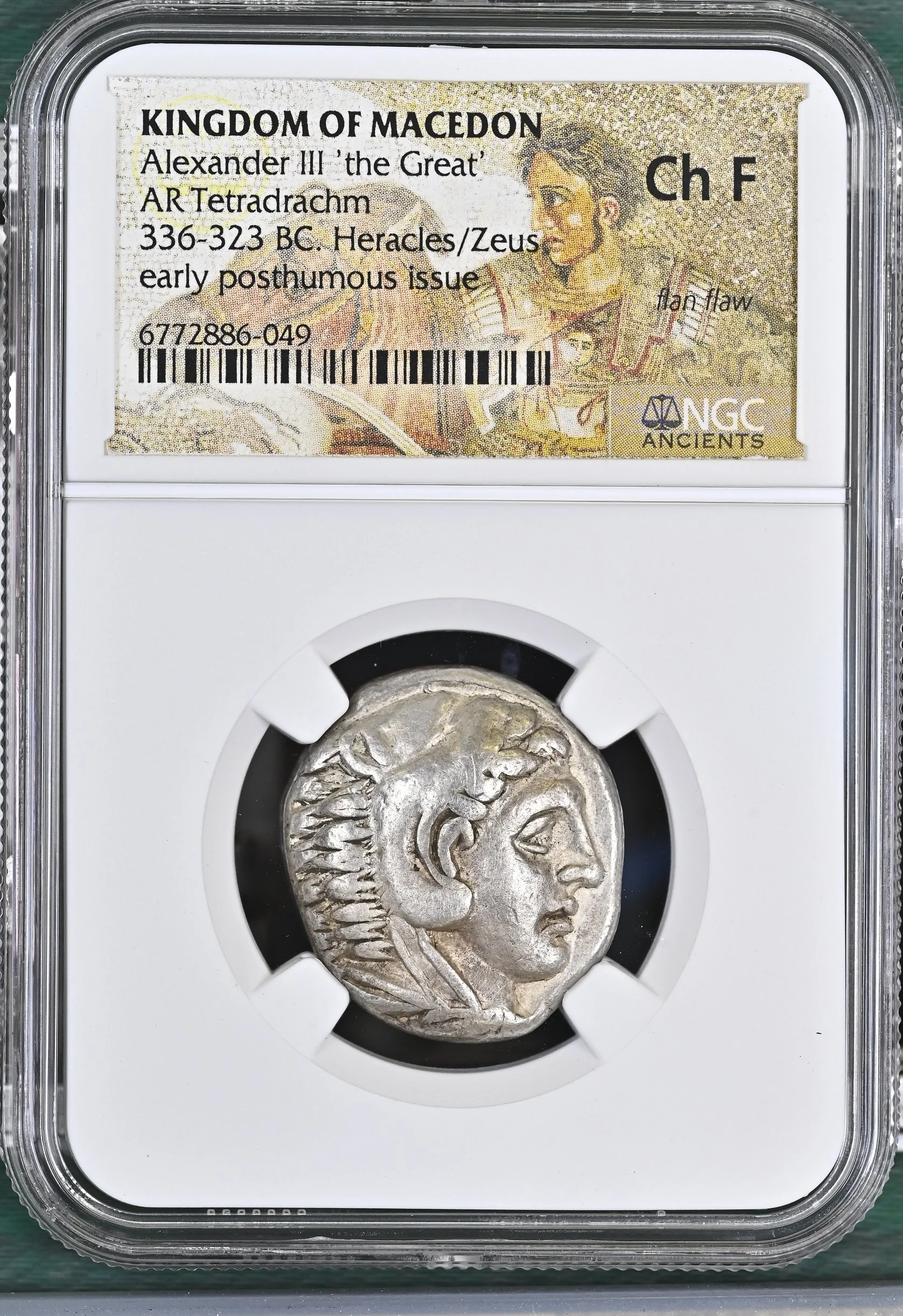 Image 1 of 2
Image 1 of 2

 Image 2 of 2
Image 2 of 2



Macedonian Silver Drachm of Alexander the Great (about 2320-2330 years ago)
This silver coin was minted in Abydus (in the Troad region of modern Turkey) shortly after Alexander the Great's death, as part of the continuing posthumous coinage that helped maintain economic stability throughout his former empire. The drachm provided a practical denomination for routine commercial transactions across the Hellenistic world.
Coin Description:
Front side: Head of Herakles (Hercules) wearing lion-skin headdress facing right, a deity Alexander claimed as an ancestor
Back side: Zeus enthroned facing left, holding eagle and scepter; "ME" monogram in left field; ivy leaf design under throne
Technical Details:
Silver composition, weighing 4.15 grams
Drachm denomination (standard Greek silver coin)
Reference: Price 1560
No certification mentioned
Date: Circa 310-301 BCE (posthumous issue)
Condition: Not specified
Historical Significance:
This coin was struck after Alexander's death, during the period when his generals (the Diadochi) were fighting for control of his vast empire. The mint of Abydus (located at a strategic point on the Hellespont, modern Dardanelles) continued producing Alexander's widely recognized coin designs to maintain economic continuity. The standardized imagery of Herakles and Zeus helped establish a unified currency system that facilitated trade throughout the Mediterranean and Near East, representing one of Alexander's most lasting legacies.
This silver coin was minted in Abydus (in the Troad region of modern Turkey) shortly after Alexander the Great's death, as part of the continuing posthumous coinage that helped maintain economic stability throughout his former empire. The drachm provided a practical denomination for routine commercial transactions across the Hellenistic world.
Coin Description:
Front side: Head of Herakles (Hercules) wearing lion-skin headdress facing right, a deity Alexander claimed as an ancestor
Back side: Zeus enthroned facing left, holding eagle and scepter; "ME" monogram in left field; ivy leaf design under throne
Technical Details:
Silver composition, weighing 4.15 grams
Drachm denomination (standard Greek silver coin)
Reference: Price 1560
No certification mentioned
Date: Circa 310-301 BCE (posthumous issue)
Condition: Not specified
Historical Significance:
This coin was struck after Alexander's death, during the period when his generals (the Diadochi) were fighting for control of his vast empire. The mint of Abydus (located at a strategic point on the Hellespont, modern Dardanelles) continued producing Alexander's widely recognized coin designs to maintain economic continuity. The standardized imagery of Herakles and Zeus helped establish a unified currency system that facilitated trade throughout the Mediterranean and Near East, representing one of Alexander's most lasting legacies.











